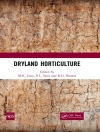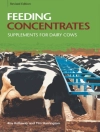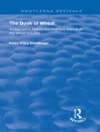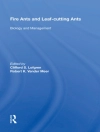The salmon louse Lepeophtheirus salmonis is adapted to
survive in hostile marine environments of the northern hemisphere,
including an ability to parasitize several species of salmon.
Salmonids are some of the most economically important and
sought after fish for human consumption, and louse parasitism has a
significant impact both on cultured and wild fish populations.
Salmon Lice is a timely collection of the latest research on
the cause and spread of lice infestations and management techniques
being designed and implemented to combat this issue.
Salmon Lice provides a thorough single volume review of
Lepeophtheirus salmonis, the key parasite standing in the
way of sustainable and profitable production of salmonid fishes
including salmon, trout and charr. Opening with a review of the
biology, morphology, life cycle, and larval behavior of the
parasite, Salmon Lice proceeds to review the distribution of
planktonic larvae of salmon lice, addresses management techniques
used in salmonid aquaculture and capture fisheries, provides a
practical assessment of the salmon lice issue and explores
potential solutions to the problem.
With comprehensive coverage of the biology and distribution of
this harmful and ubiquitous parasite, Salmon Lice will be of
value to fish health researchers, aquaculture and fisheries
professionals, and seafood industry personnel to inform the
management of both cultured and wild salmonid populations.
Key Features:
* In-depth coverage of a key parasite impacting viability and
sustainability of salmonid fisheries and aquaculture
* Integrates parasite biology and hydrodynamic models in diverse
coastal ecosystems
* Provides a practical assessment of the salmon louse issue
Reviews international salmon louse monitoring and management
techniques used in salmonid fisheries and aquaculture
Tabella dei contenuti
List of Contributors vii
Foreword by Bob Kabata xi
Preface xiii
Introduction: Lepeophtheirus salmonis–A Remarkable
Success Story 1
Craig J. Hayward, Melanie Andrews, and Barbara F. Nowak
Part I: The Distribution and Abundance of Planktonic Larval
Stages of Lepeophtheirus salmonis: Surveillance and
Modeling
Chapter 1. Modeling the Distribution and Abundance of Planktonic
Larval Stages of Lepeophtheirus salmonis in Norway 31
Lars Asplin, Karin K. Boxaspen, and Anne D. Sandvik
Chapter 2. Abundance and Distribution of Larval Sea Lice in
Scottish Coastal Waters 51
Alexander G. Murray, Trish L. Amundrud, Michael J. Penston,
Campbell C. Pert, and Stuart J. Middlemas
Chapter 3. Sea Louse Abundance on Farmed Salmon in the
Southwestern New Brunswick Area of the Bay of Fundy 83
Blythe D. Chang, Fred H. Page, Michael J. Beattie, and Barry
W.H. Hill
Chapter 4. Modeling Sea Lice Production and Concentrations in
the Broughton Archipelago, British Columbia 117
Dario J. Stucchi, Ming Guo, Michael G.G. Foreman, Piotr Czajko,
Moira Galbraith, David L. Mackas, and Philip A. Gillibrand
Part II: Salmon Louse Management on Farmed Salmon
Chapter 5: Salmon Louse Management on Farmed Salmon–Norway
153
Gordon Ritchie and Karin K. Boxaspen
Chapter 6: Ireland: The Development of Sea Lice Management
Methods 177
David Jackson
Chapter 7: Salmon Louse Management on Farmed Salmon in Scotland
205
Crawford W. Revie
Chapter 8: Sea Lice Management on Salmon Farms in British
Columbia, Canada 235
Sonja M. Saksida, Diane Morrison, Mark Sheppard, and Ian
Keith
Part III: Salmon Lice on Wild Salmonids in Coastal Zones:
Present Status and Implications
Chapter 9: Present Status and Implications of Salmon Lice on
Wild Salmonids in Norwegian Coastal Zones 281
Bengt Finstad and P°al Arne Bjørn
Chapter 10: Lepeophtheirus salmonis on Salmonids in the
Northeast Pacific Ocean 307
Simon R.M. Jones and Richard J. Beamish
Index 331
Color plates appear between pages 50 and 51.
Circa l’autore
Richard Beamish is Senior Scientist in the Salmon and
Freshwater Ecosystems division at the Pacific Biological Station,
Nanaimo, British Columbia, Canada.
Simon Jones is a Research Scientist in Aquatic Animal
Health at the Pacific Biological Station, Nanaimo, British
Columbia, Canada.












